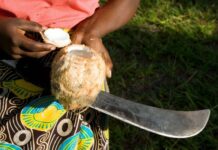What is an animal’s potential and how can we help them achieve their best? We breed our animals based on our balanced breeding philosophies. Do you wonder what to expect from these animals? Today we highlight genetic progress and what you can expect from our champions.
The impact of 2% progress each generation
How to find the best animals for the next generation? Thanks to our continuous innovation in R&D, the animals we breed are the best of the best.
Let us dive into balanced breeding a bit. An animal is a complex organism and the proper functioning is like clockwork. Every gear is connected to another. Influencing one single thing, means that the rest will be affected too. Breeding can encompass health, survival rate, meat quality, feed efficiency, egg quality, mothering abilities, social behavior and more. Improving on all those traits together is not as simple as selecting for the ones you like most. It is balance we are after. Which implies that we need to look at all traits. For example, breeding for more piglets means making sure the sow has enough teats and milk production to raise all her piglets on her own.
The piglets themselves need to be uniform to give them the best start so they can thrive. If they eat and grow well, they will be able to withstand a possible disease or other challenges with ease. That, in a nutshell, is what balanced breeding is about. Selecting and improving on all supporting elements is the most sustainable way forward. Balanced breeding now also must tie into enhanced sustainability as well as general improved performance.
Productivity can drive social and environmental sustainability too
Most protein producers focus on a higher productivity of their stock. We think we can improve on social and environmental aspects while improving economics at the same time. Today there are about 5 000 000 000 laying hens alive worldwide. The average output of a laying hen is about 360 eggs in a bird’s lifetime. In 1970 that average number was 240 eggs. What if these birds were all Hendrix Genetics laying hens? We breed our birds to live longer healthier lives, so they can reach 500 first quality eggs in their lifetime.
Gradual genetic progress has made it possible for our laying hens to lay far more eggs now than in 1970. Think of the number of people who are able to get more protein from the same number of birds? With birds that need fewer resources to produce more eggs, we can feed the growing world population with a staggering 700 000 000 000 eggs more than what we produce today and 1 300 000 000 000 more compared to 1970.
This is just one example of how 2% progress can feed more people while reducing our impact on the environment.
Want to see what other species contribute?
Swine
Achieving superior feed conversion rates in products for all markets. Learn more









